20 expert tips to growing great tomatoes
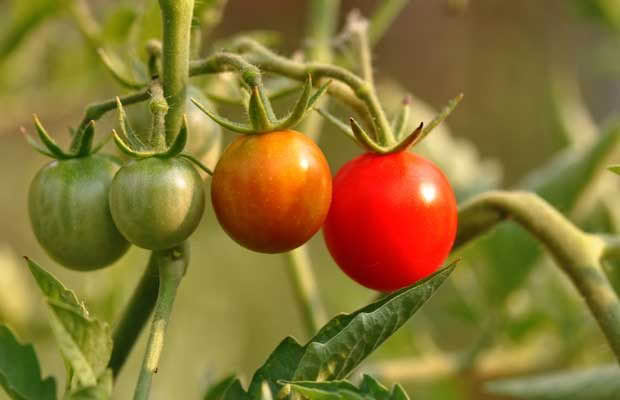
Long-time tomato growers share their secrets to getting a bumper crop.
Words: Jane Wrigglesworth
1. A French visitor to my garden encouraged me to do as the French do to grow bountiful crops of tomatoes: water copiously! She advised me to form channels in the soil beneath the plants, and flood those daily.
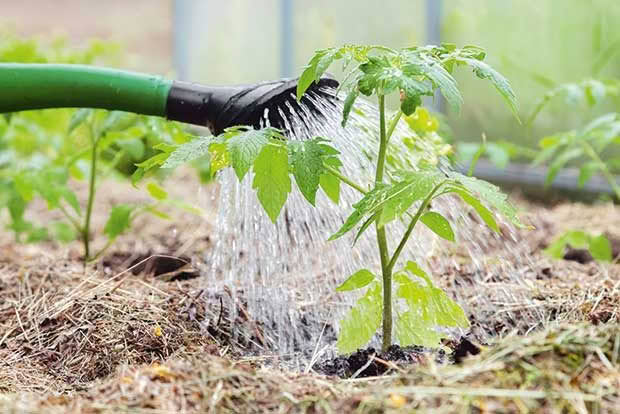
She swore by the method, and I’ve followed her advice ever since. It saves watering with a hose or can, and keeps the water droplets off the fruit and leaves. I use only rainwater, collected from the roof of my house.
– Robert Guyton, permaculturist, forest gardener, regional councillor for Environment Southland
2. My mum, Nancy, grew great tomatoes in buckets. She’d fill the bucket with one-third well-composted manure and two-thirds soil (from her garden which was already pretty amazing). She’d scoop out a hole, add one-quarter cup each of Epsom salts and milk powder into the bottom, mix it up a bit in the soil, then plant the tomato seedling right up to its top leaves.
She fed the plants this Epsom salt-milk powder brew every week too, about a tablespoon of each, dissolved in a cup of water. She grew the biggest tomatoes I have ever seen, around 490g each.
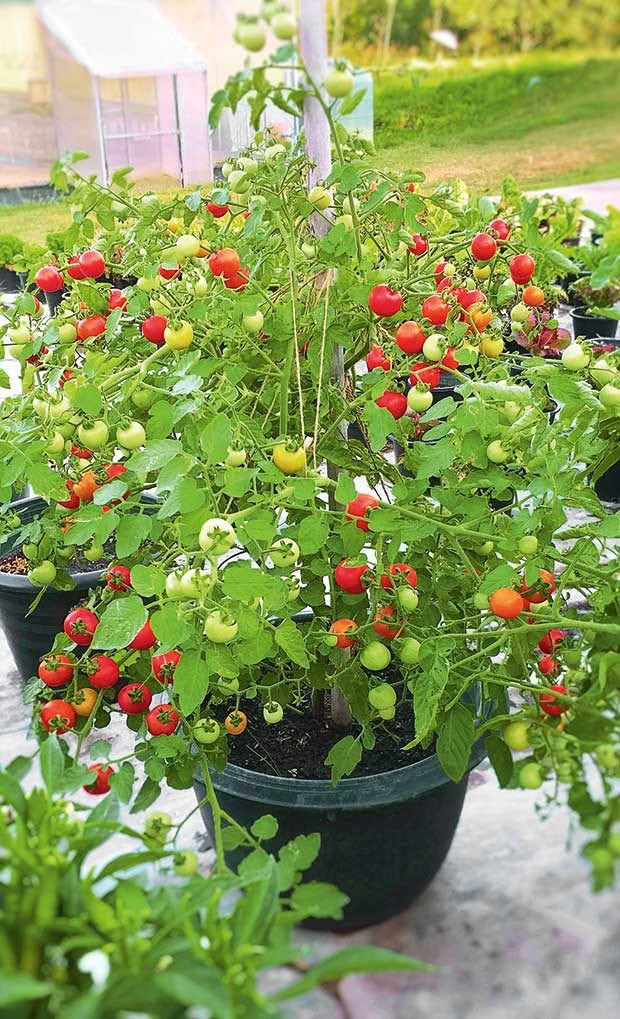
– Kristina Jensen, NZ Lifestyle Block columnist, Marlborough Sounds
3. Tomatoes in greenhouses need ventilation, or they’ll shut down production when temperatures climb. A tomato’s male reproductive organs can’t cope with temperatures above 32°C for several consecutive days. The anthers deform, reducing pollen viability and quantity, which means less fruit. Even when temperatures aren’t extreme, a lack of air circulation can inhibit the movement of pollen to the flower pistils.
– Jane Wrigglesworth, garden writer/editor, Auckland
4. Create a healthy soil. The more you feed tomato plants, the more fruit they’ll produce. I use 100g lime, 20g dolomite, and a 20-litre bucket of good compost per one square metre of garden. I apply a liquid fish and seaweed drench to the soil around my outdoor plants one month, then a comfrey and worm leachate tea the next, and alternate these through the season.
Tomatoes are heavy feeders, so I side-dress with compost in January. I grow and harvest heritage tomatoes in a greenhouse until late June-early July. If growing in a glasshouse, feed as outlined above but do it twice a month, and add 5g sulphate potash to the mix. Maintain an even soil moisture, so the fruit doesn’t split.
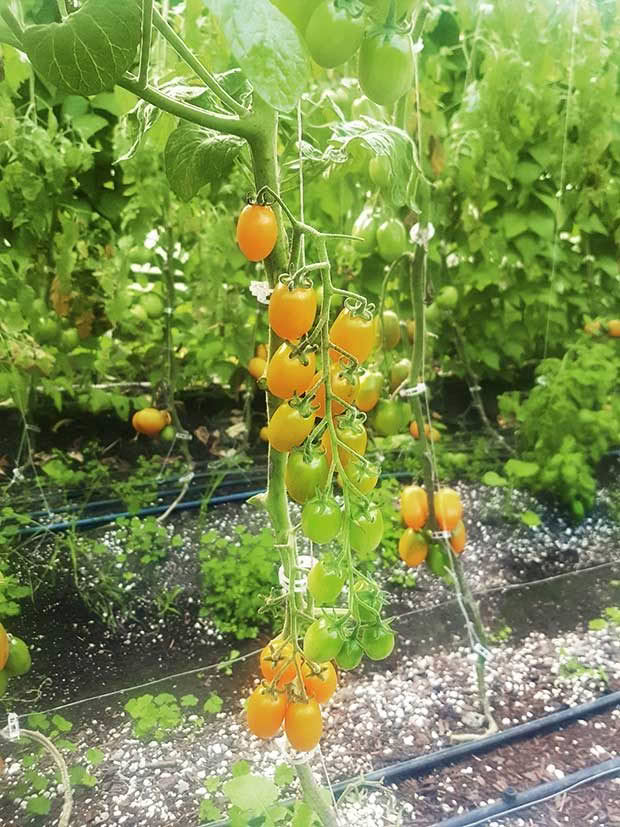
Golden Grape is a heritage tomato from the Heritage Food Crops Research Trust which Tony grows and sells at Wellington’s Thorndon Farmers’ Market each week.
If you’re growing in a bag or tub, feed weekly; if plants have a heavy crop, feed twice a week.
Greenhouse tomatoes will also need a dose or two of magnesium sulphate (Epsom salts) for good chlorophyll development as they go into autumn. Add 20g per litre
of water to the fortnightly feed.
– Tony Robinson, biological soil advisor and farm manager of nutrient-dense food crops at Rambler Flowers in Levin
5. Be open to a new way of gardening that accepts the consciousness of all living things, and talk to your tomato plants. Many plant scientists now claim plants are sentient*, and research shows plants can hear and respond to sounds**.
Let them know how much you appreciate their bountiful crop and the health-giving properties of their fruit.
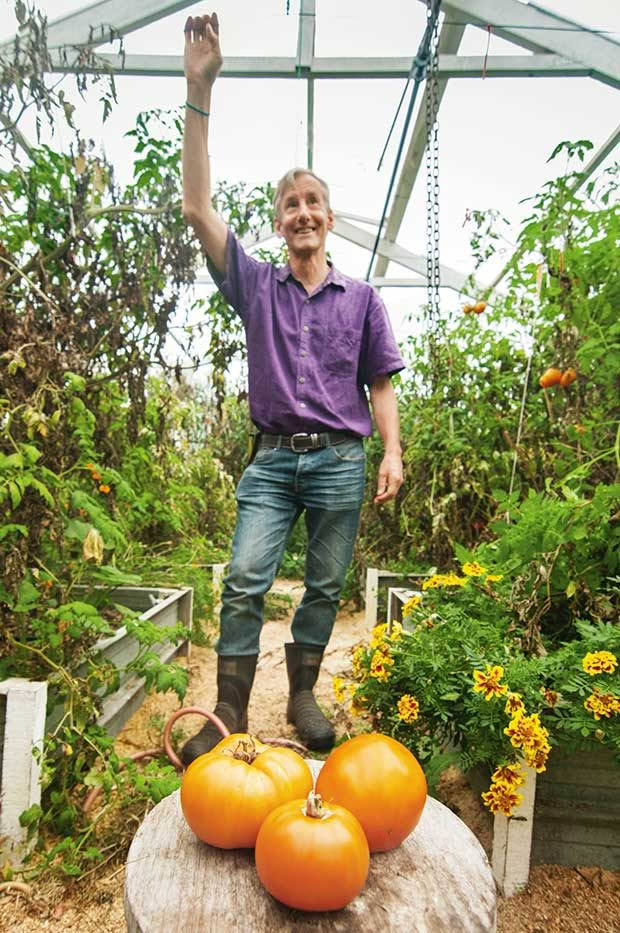
There was a time when every indigenous culture understood the benefits of and need to communicate
with plants. It’s time to reactivate that far memory, to care for plants, and treat them with respect.
– Mark Christensen, Research Director of Heritage Food Crops Research Trust, Whanganui
6. Feed, water, feed. Repeat. Tomatoes have a long growing season and use a lot of energy to produce the juicy fruits we love.
• add a good handful of worm castings at planting time to get the roots excited;
• feed the leaves every two weeks with a nutrient-rich seaweed solution such as AgriSea Foliar Nutrition;
• once a month, if you have any spare worm tea, add it to the soil around the roots.
– Danielle Cipperly, Collection Curator at Auckland Botanic Gardens
7. Have the soil well composted and put in stakes when you plant your tomatoes. Make sure you train and dis-bud them regularly. Some gardeners think you get more tomatoes if you let the side shoots grow, but in Auckland’s humidity, keeping them well-trained decreases disease.
Another tip you’ll hear is to add a teaspoon of milk powder to the planting hole to help with calcium. I’ve found rinsing out milk containers (before recycling) and putting the water around your tomato plants does the same thing. It’s also an easy way to remember to water the plants regularly.
– Kathrina Muller, Horticulturist, Auckland
8. Six keys to healthy tomatoes:
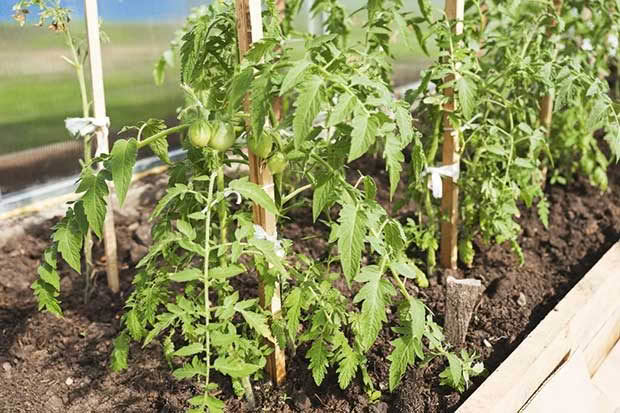
• Use good quality seeds from a reputable source.
• Plant deep, burying some of the lower branches – this promotes a strong root system.
• Thin out seedlings, allowing individual plants space to grow strong and branch out. Ensure the plants receive plenty of light – more light generally means more fruit – and check for drying out.
• Mulch the base to conserve moisture and help prevent splashing, which can contribute to soil-borne diseases.
• Closely monitor growth, looking for any problems, and pinch out the growths in the crotch of branches – these sap precious energy and won’t bear fruit.
• Water regularly and deeply during fruit development, to encourage strong root growth.
– Gus Flower, Operations Manager, Hamilton Gardens
9. From my perspective as a seed grower, the process of getting healthy, vibrant, productive tomatoes starts with seed selection. Choosing seeds you have saved yourself is your best bet.
The best tomatoes for New Zealand gardeners are the ones that have been grown and seed-selected in New Zealand. There are many reasons for this, the main one being climate adaptation. Over time, we find the ones we save in our seed garden become more adapted to the local environment and are more likely to thrive.
When we decide to trial new varieties, they never perform as well as the ones we’re growing from our collection. But after a season or two growing in our garden, they start to shine.
– Setha Davenport, co-founder of Setha’s Seeds
10. Terroir is a simple but powerful concept, where climate, soil, and plant interact
to produce an expression of that interaction. I was in the wine industry for 40 years, and it’s NZ’s terroir that means we can grow great pinot noir in Central Otago. Some regions produce good pinot (Hawke’s Bay), others not so great. Sauvignon blanc grow everywhere, but its flavour and structure change from region to region.
It’s the same with tomatoes. It’s best to grow a tomato variety that has regional origins climatically
suited to your province. Currently, we import four varieties that we have found do well in NZ. Know your climatic conditions and grow varieties accordingly.
Costoluto Fiorentino: from Florence, grows well in most areas of New Zealand and does well in cooler summer temperatures.
Red Pear: from North Italy, suits cooler to warm provinces.
San Marzano Redorta: best for really warm provinces.
Red Cherry: good for everywhere in New Zealand.
– Gillian Hurley-Gordon, Italian Seeds Pronto
11. I live at an elevation of 200m and the local climate is only frost-free from November to March. Growing becomes all about creating micro-climates. My top tip for any tomato grower: look at your environment and how you can enhance it to ensure a bountiful crop.
In my situation, it’s all about having cloches and tunnel houses ready for the early tomatoes. It includes frost cloth over the plants in the tunnel house on cold nights for the first 4-6 weeks.
I usually plant into the tunnel house in mid-September, so I have fruit in early December. Whatever your location, always focus on how you can make the environment match the tomato plants’ preferences.
– Bronwyn Adams-Hooper, creator of Seeds of Change, a community organisation that provides organically-grown, nutrient-dense foods to families in need
12. I had a massive crop of tomatoes last year: 15 plants yielded over 300kg. Lots were eaten or given away, and the rest were turned into sauce and frozen for future spaghetti bolognese and lasagna.
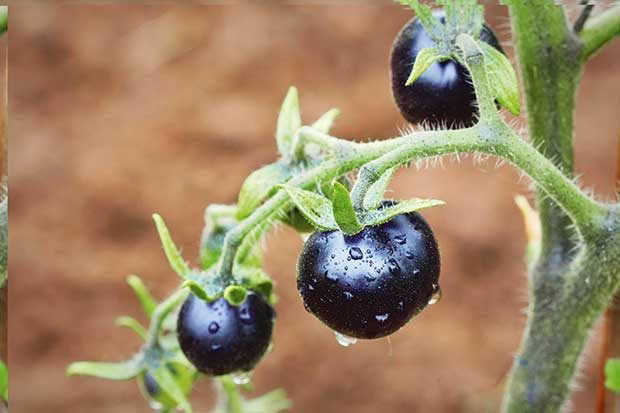
Indigo Blue Berry.
My secrets: put a big handful of pelleted sheep manure under each plant, and stagger the sowings, so they don’t all fruit at the same time. It’s better to have two or three plants coming on every 3-4 weeks than all at once. Last summer, I grew three of each of:
- Chef’s Choice Orange, bright, almost neon-coloured, rich taste, 250g beefsteak-type, highly productive, disease-resistant; Black Cherry, sweet, rich flavour;
- Diplom, great taste, firm fruit, disease-resistant, long season, 80-100g fruit;
- Best Boy Bush, early, heavy cropper, delicious 200g red fruit, disease-resistant;
- Honeybee, exceptionally sweet, bright yellow cherry, prolific.
- Chef’s Choice Orange yielded the most by far, but Honeybee still had edible fruit on it when I ripped the vines out at the end of June.
– Gerard Martin, Kings Seeds
13. Water is essential, but don’t overdo it. Consistency is key for tomatoes. Keep the soil evenly moist, especially the young seedlings. Once the plants have good strong leaf growth and regular liquid fertilising starts, water for longer, deeper sessions rather than short bursts.
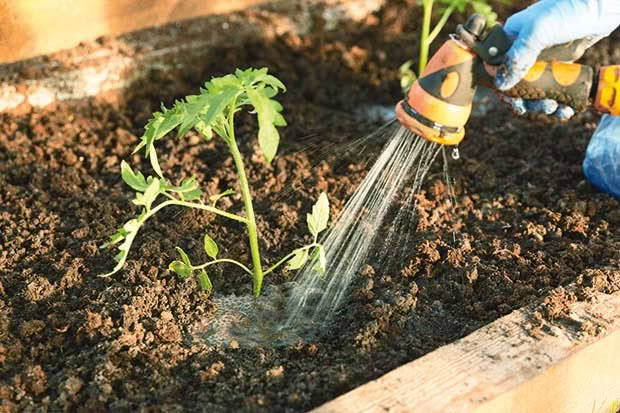
It helps the roots grow downwards through the soil, creating sturdier plants, and prevents the fruit from cracking at the ends.
– Danielle Cipperly, Auckland Botanic Gardens
14. Every two weeks I foliar spray a seaweed and comfrey tea mix for pest and disease prevention, occasionally adding neem oil for aphids, thrips, and whitefly.
– Tony Robinson, Rambler Flowers, Levin
15. If you’ve got limited space make sure you’re clear what you want the tomatoes for:
• for raw flavour?
• for cooking?
• for tomato paste or sauce?
I recommend people grow what they need, then throw in one new variety each year. I grow in 10-litre buckets and use a good quality potting mix. We’re in Canterbury, so I don’t bother planting outdoor tomatoes until the end of October.
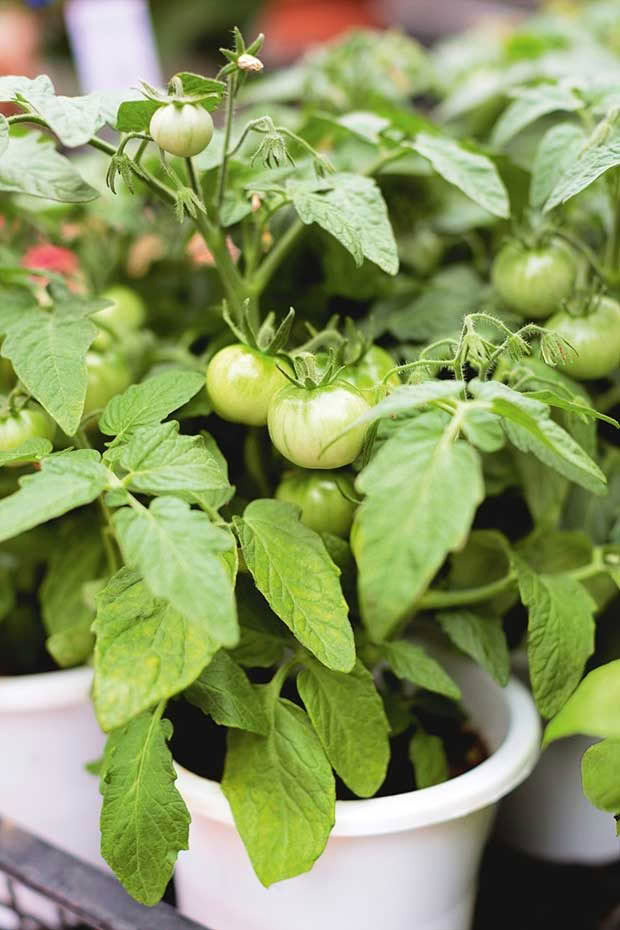
It’s all about soil temperature. You can see when other plants are starting to move. You’re waiting until the last of your frosts are over, which can vary season to season.
In the glasshouse, you can plant a month earlier. I tend to grow the grafted tomatoes because they’re a bit stronger, and you can get grafted heritage tomatoes now. I buy all my grafted ones, but everything else is grown from seed in the glasshouse, hardened off in shade areas, then planted out.
– Louise, section curator, Christchurch Botanic Gardens
16. I’ve been growing my tomatoes in straw bales for a while now, and it’s really effective. I use them in spots with poor or contaminated soil, or where space is limited. The heat from the decomposing bale encourages tomatoes to grow.
Native reed bales are great if you can get your hands on them. I find hay bales produce too many weeds. Before purchasing bales, check whether the crop was treated with a weed killer as the residue will remain, to the detriment of your tomatoes.
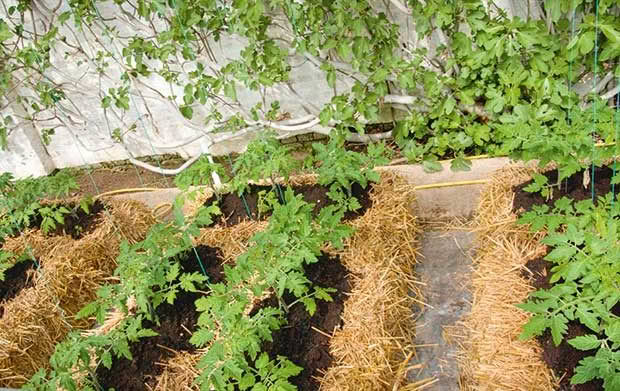
Either use bales that are a year old, as they will have begun to decompose in the centre, or ‘treat’ new bales before planting to kick-start decomposition. Water them with a high nitrogen fertiliser (some traditionalists use urine mixed 1:5 with water). Keep the bales damp, or the composting process will stop.
In a matter of days, the bales will begin to ferment and decompose, and they’ll heat up due to microbial action. Temperatures should get to at least 43°C, before peaking and falling to below 38°C – this may take about two weeks, depending on the outdoor temperature. The bales are then ready to plant up.
Add a couple of large handfuls of good quality potting mix and a little compost per planting spot, then plant a seedling in it.
Tomatoes grown in bales need regular feeding, at least once a week, often twice a week, as nutrients are lacking in straw. Use a proprietary tomato fertiliser or organic food such as comfrey or sheep-pellet tea.
– Jane Wrigglesworth, Auckland
17. Grow tomatoes under psyllid-proof mesh. I got mine from Lincoln University. I constructed a tunnel house (to my own design), so I can work under it. The mesh also keeps insects such as whitefly out.
It avoids the need for insecticidal sprays or other controls. You do have to be very careful to leave no gaps.
– Phil Thomsen, Secretary of the Bason Botanic Gardens Trust, Whanganui,
18. Create ‘lasagne’ beds by adding lots of organic matter to the top of the garden bed, such as farm animal manure, comfrey leaves, coffee grounds, and cardboard as the lasagne sheets. Finish off with a thick mulch of hay.
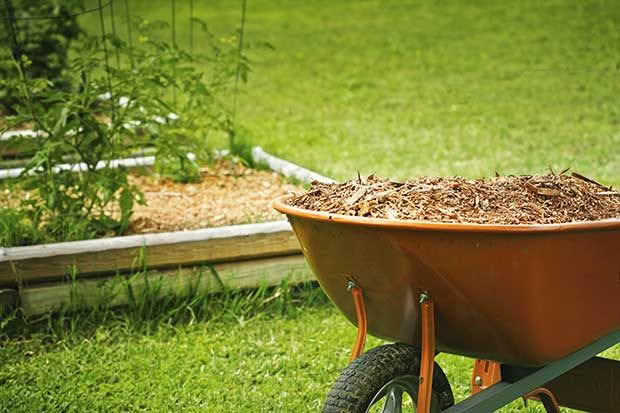
Turn the hay when you see weeds or grass germinating to get a weed-free bed. Soil micro-organisms will break down the lasagne layers and feed the tomatoes for the whole summer. The mulch retains water and stops splash-back from the soil, reducing blight. The comfrey contains high levels of potassium for fruit and flowers.
Feed weekly, in the morning, with a foliar seaweed tea to ward off blight and enhance the flavour and size of the tomatoes.
– Derina Turner, organic horticulture teacher, Korito Education, New Plymouth, www.korito.co.nz
19. We feed the soil weekly or fortnightly with a comfrey and seaweed tea to combat blight. We grow our comfrey on-site and purchase the seaweed in a powdered form from a certified organic source to be sure it’s not contaminated.
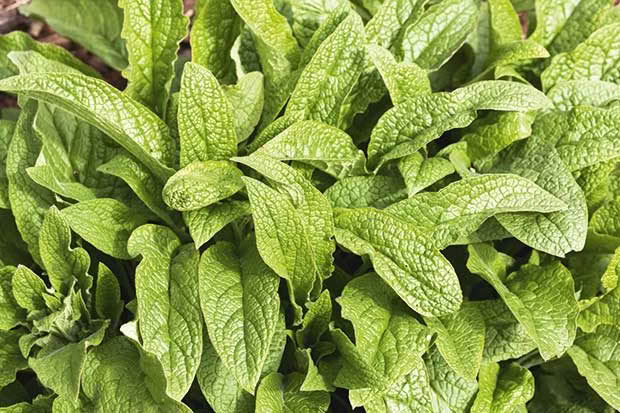
We also feed the plants through the leaves. We use a backpack sprayer to apply a monthly foliar feed to give the exact nutrients the plants need. Foliar feeding is the fastest, most effective way to give plants a boost during the season. We use a purchased foliar feed that either promotes leaf growth or fruit seed set, depending on the plant’s lifecycle.
– Setha Davenport, Setha’s Seeds
20. Grow companion plants. Basil is excellent for detracting whiteflies, which navigate their way to tomatoes by smell. Basil is highly scented and masks the smell of the tomato plants. Other good companion plants include marigolds, nasturtiums, spring onions, chives, and coriander. The nasturtiums also attract pests away from tomato plants.
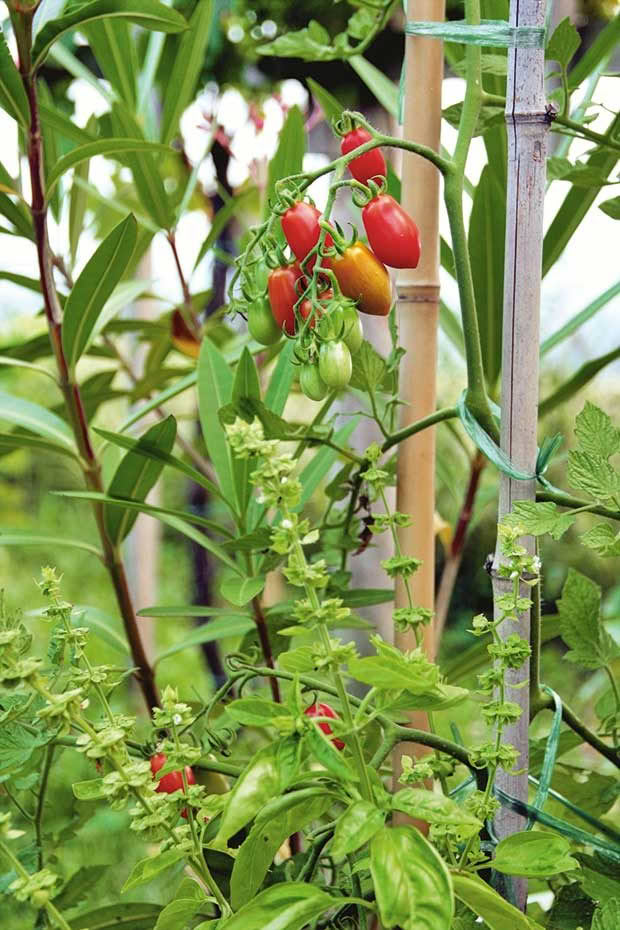
– Louise, section curator, Christchurch Botanic Gardens
* Brilliant Green, by plant neurobiologist Stefano Mancuso, 2015
** Flowers respond to pollinator sound within minutes by increasing nectar sugar concentration; Marine Veits et al, 2018
MORE HERE:
Love this story? Subscribe now!
 This article first appeared in NZ Lifestyle Block Magazine.
This article first appeared in NZ Lifestyle Block Magazine.
